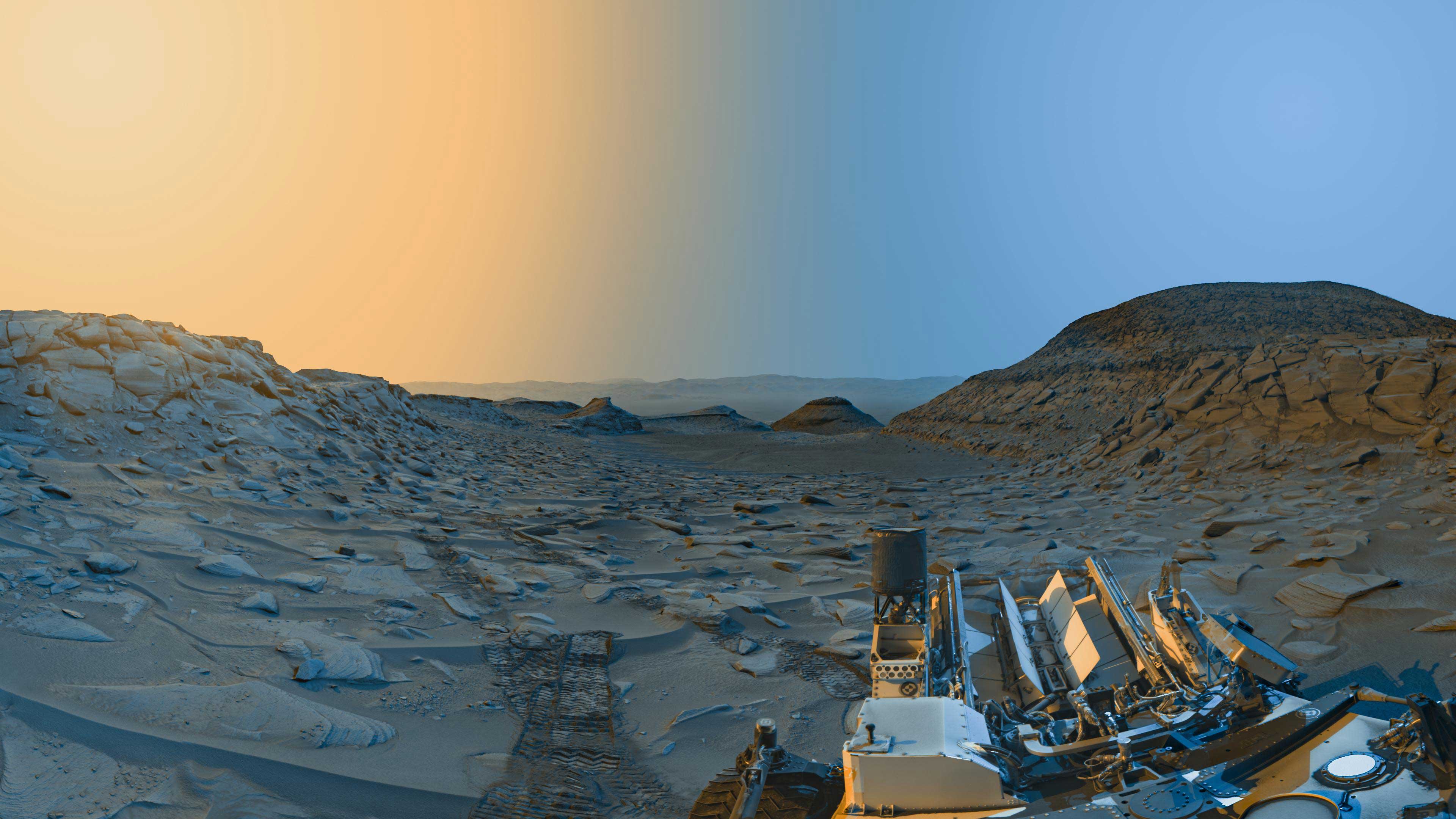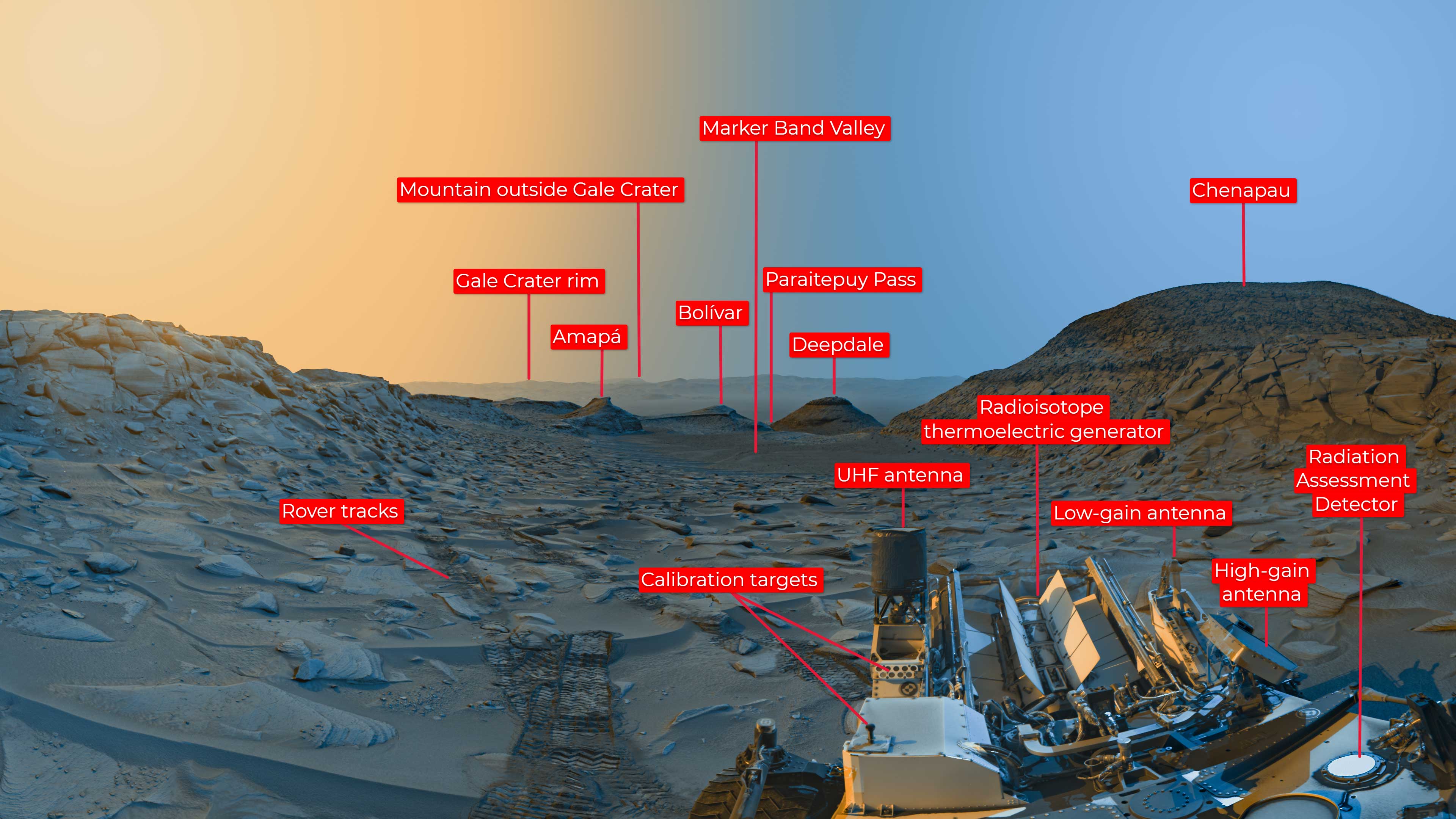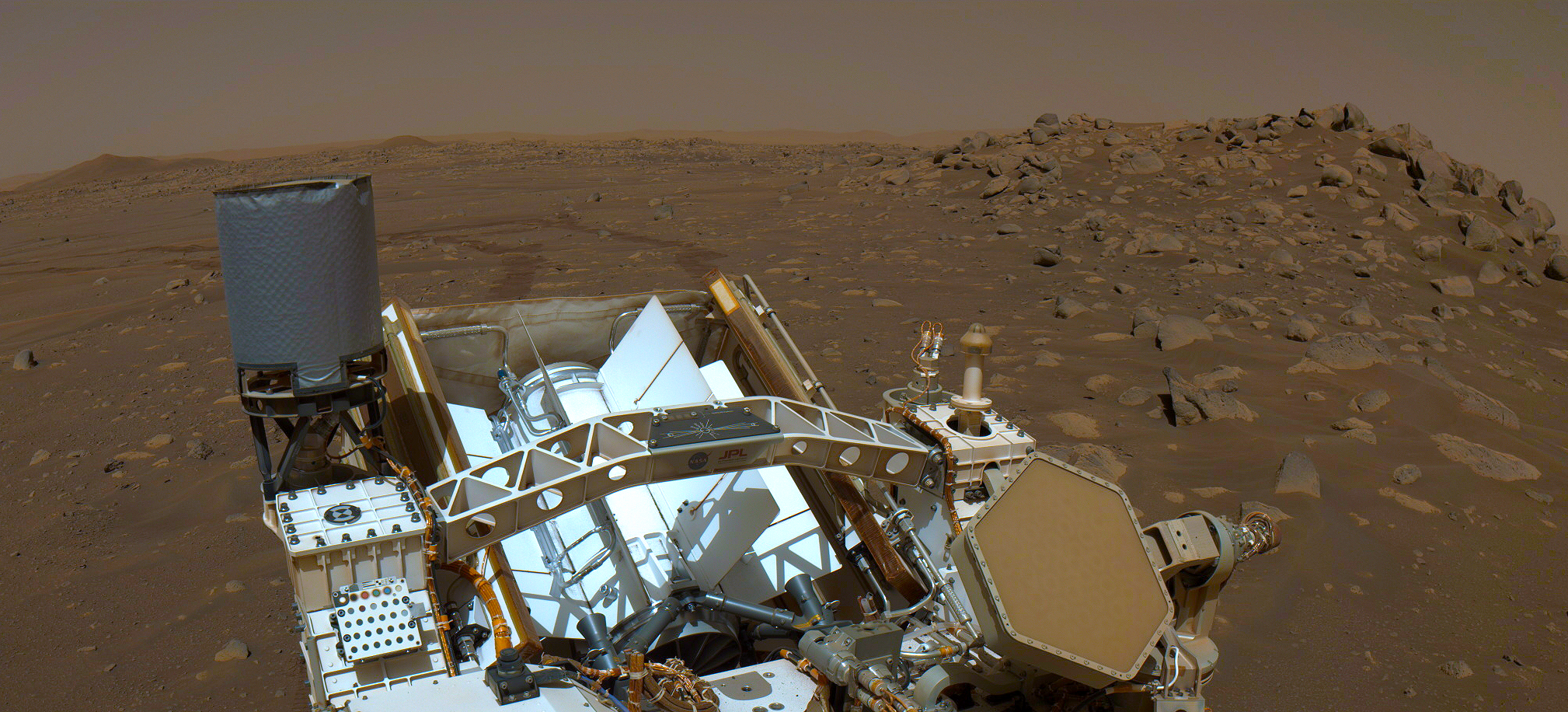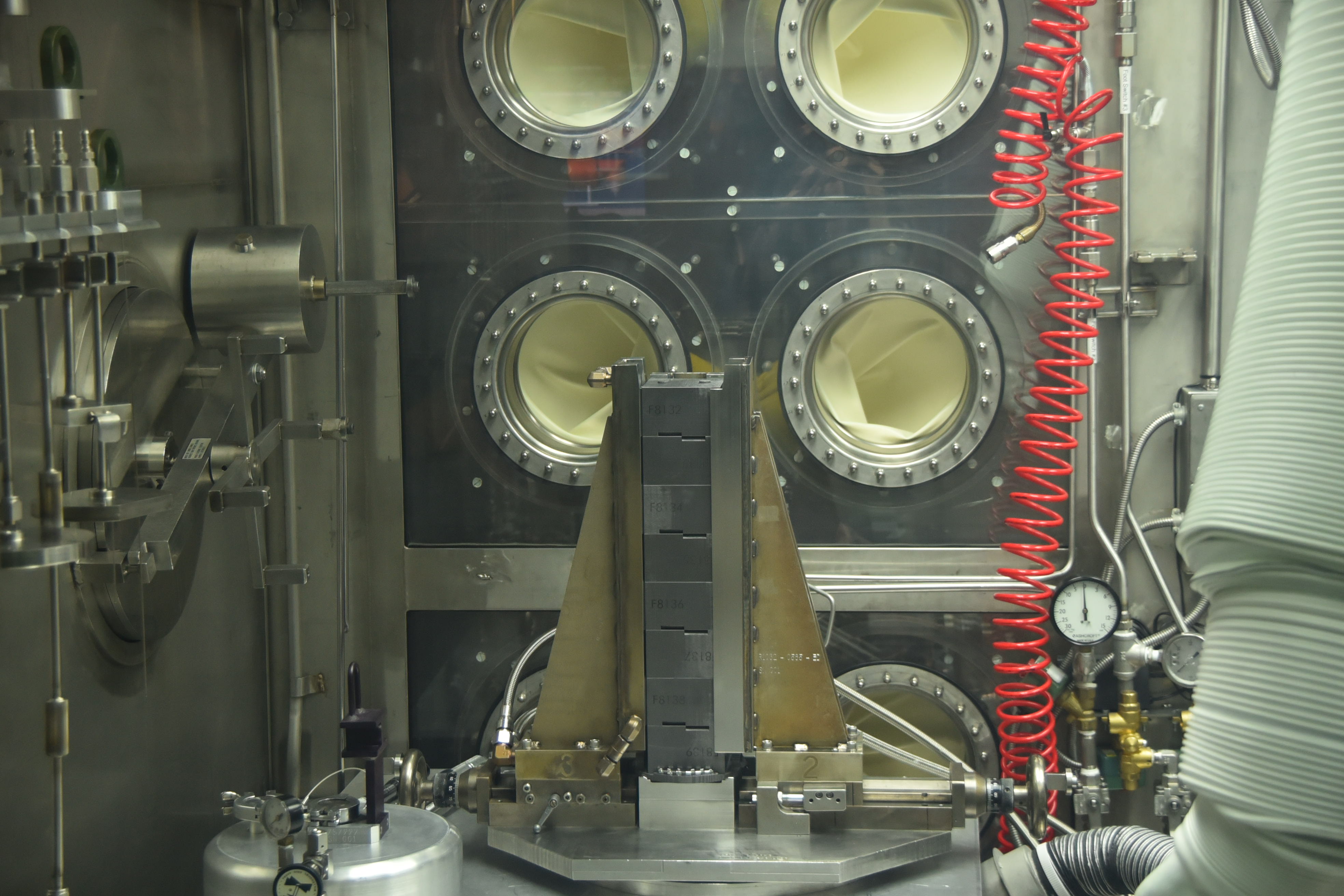Systems
Radioisotope Power
NASA uses radioisotope thermoelectric generators, or RTGs, to provide electrical power for certain spacecraft by converting the heat generated by the decay of plutonium-238 (Pu-238) fuel into electricity.
Before and After
Curiosity's 'Postcard' of 'Marker Band Valley'
June 13, 2023
Radioisotope Power
Currently NASA uses radioisotope thermoelectric generators, or RTGs, to provide electrical power for certain spacecraft by converting the heat generated by the decay of plutonium-238 (Pu-238) fuel into electricity using devices called thermocouples. Since they have no moving parts that can fail or wear out, RTGs have historically been viewed as a highly reliable power option.
Thermocouples are common in everyday items that must monitor or regulate their temperature, such as air conditioners, refrigerators and medical thermometers. The principle of a thermocouple involves two plates, each made of a different metal that conducts electricity. Joining these two plates to form a closed electrical circuit while keeping the two junctions at different temperatures produces an electric current. Each of these pairs of junctions forms an individual thermocouple. In an RTG, the radioisotope fuel heats one of these junctions while the other junction remains unheated and is cooled by the space environment or a planetary atmosphere.
Multi-Mission Radioisotope Thermoelectric Generator (MMRTG)
The current RTG model is the Multi-Mission Radioisotope Thermoelectric Generator, or MMRTG. It is based on the type of RTG flown previously on the two Viking landers and the Pioneer 10 and 11 spacecraft (the SNAP-19 RTG). It is designed to be used in either the vacuum of space or within the atmosphere of a planet. The excess heat energy from an MMRTG can be used as a convenient and steady source of warmth to maintain proper operating temperatures for a spacecraft and its instruments in cold environments.
Systems Under Development
Next Generation (Next Gen) RTG
- Objective: Establish a production line to manufacture a new flight-ready RTG based upon the design of the General Purpose Heat Source (GPHS)-RTG by 2030.
- Output (estimated) 252 Watts electric at beginning of mission (assuming 16 GPHS modules with 4,000 Watts thermal of heat inventory).
- Uses the heritage design of the GPHS-RTG with Step-2 GPHS modules instead of Step-1.
- Under an agreement between NASA and the Department of Energy, the Idaho National Laboratory manages the Next Gen RTG contract with Aerojet Rocketdyne and several subcontractors, who lead flight hardware development, with NASA’s Glenn Research Center holding overall project management responsibility.
Previous Generations of RTGs
Systems for Nuclear Auxiliary Power-19B (SNAP-19B) RTG
Power source for Nimbus III meteorological satellite.
- Output 28.2 Watts electric (or We) at beginning of mission.
- NASA's first application of a radioisotope power system (RPS).
- Nimbus B-1 launch on 18 May 1968:
- Launch vehicle failure forced destruction by range safety officer.
- Spacecraft and upper stage sank in California's Santa Barbara Channel.
- RTGs recovered and fuel reused for Nimbus III.
SNAP-19 RTG
Power source for the Viking 1 and 2 Mars landers and the Pioneer 10 and 11 spacecraft.
- Output 40.3 Watts electric (Pioneer) and 42.6 Watts electric (Viking) at beginning of mission,
- Modified version of SNAP-19B.
- Pioneer 10 & 11 design lifetime was five years; spacecraft continued to communicate with Earth for 30 and 22 years respectively.
- Viking 1 & 2 operational requirement was 90 days; landers operated for six and four years respectively.
SNAP-27 RTG
Power source for the Apollo Lunar Surface Experiment (ALSEP) packages carried to the Moon by Apollo crews. Astronauts on Apollo missions 12, 14, 15, 16 and 17 deployed RTG-powered ALSEPs.
- Output 70 Watts electric at beginning of mission.
- Two-year design lifetime. All deployed units operated five to eight years until ALSEP stations were shut down in 1977.
Multi-Hundred Watt RTG (MHW-RTG)
Power source for Voyager 1 and 2 spacecraft
- Output 158 Watts electric at beginning of mission.
- The RTGs still operating over 45 years later on the edge of interstellar space.
General Purpose Heat Source RTG (GPHS-RTG)
- Output 292 Watts electric at beginning of mission
- A total of 18 general purpose heat source (GPHS) modules are stacked together to provide the heat source for each GPHS RTG.
- New Horizons RTG is still operating and enabled an extended mission deeper into the Kuiper Belt beyond Pluto.
- Galileo operated for nearly 14 years, while Ulysses and Cassini functioned for nearly 19 years in space.






